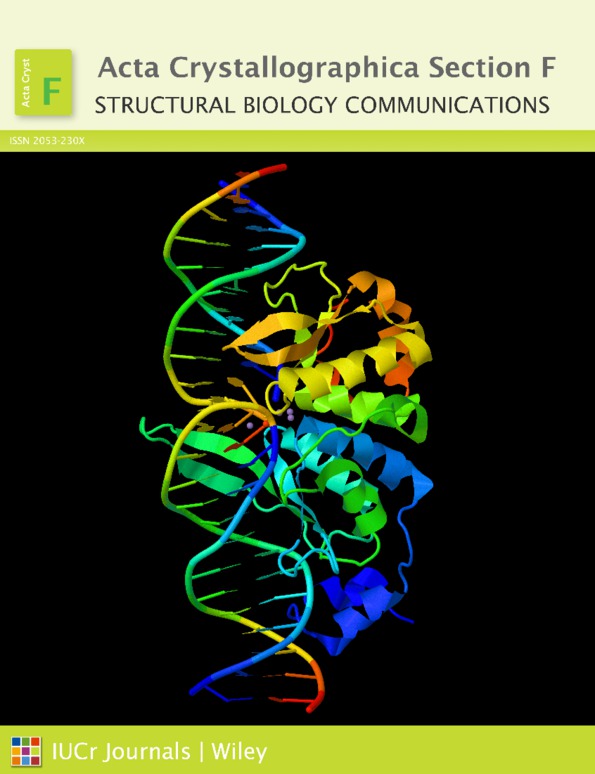Crystal structures of two monomeric triosephosphate isomerase variants identified via a directed-evolution protocol selecting for l-arabinose isomerase activity
Abstract
The crystal structures are described of two variants of A-TIM: Ma18 (2.7 Å resolution) and Ma21 (1.55 Å resolution). A-TIM is a monomeric loop-deletion variant of triosephosphate isomerase (TIM) which has lost the TIM catalytic properties. Ma18 and Ma21 were identified after extensive directed-evolution selection experiments using an Escherichia colil-arabinose isomerase knockout strain expressing a randomly mutated A-TIM gene. These variants facilitate better growth of the Escherichia coli selection strain in medium supplemented with 40 mMl-arabinose. Ma18 and Ma21 differ from A-TIM by four and one point mutations, respectively. Ma18 and Ma21 are more stable proteins than A-TIM, as judged from CD melting experiments. Like A-TIM, both proteins are monomeric in solution. In the Ma18 crystal structure loop 6 is open and in the Ma21 crystal structure loop 6 is closed, being stabilized by a bound glycolate molecule. The crystal structures show only small differences in the active site compared with A-TIM. In the case of Ma21 it is observed that the point mutation (Q65L) contributes to small structural rearrangements near Asn11 of loop 1, which correlate with different ligand-binding properties such as a loss of citrate binding in the active site. The Ma21 structure also shows that its Leu65 side chain is involved in van der Waals interactions with neighbouring hydrophobic side-chain moieties, correlating with its increased stability. The experimental data suggest that the increased stability and solubility properties of Ma21 and Ma18 compared with A-TIM cause better growth of the selection strain when coexpressing Ma21 and Ma18 instead of A-TIM.




